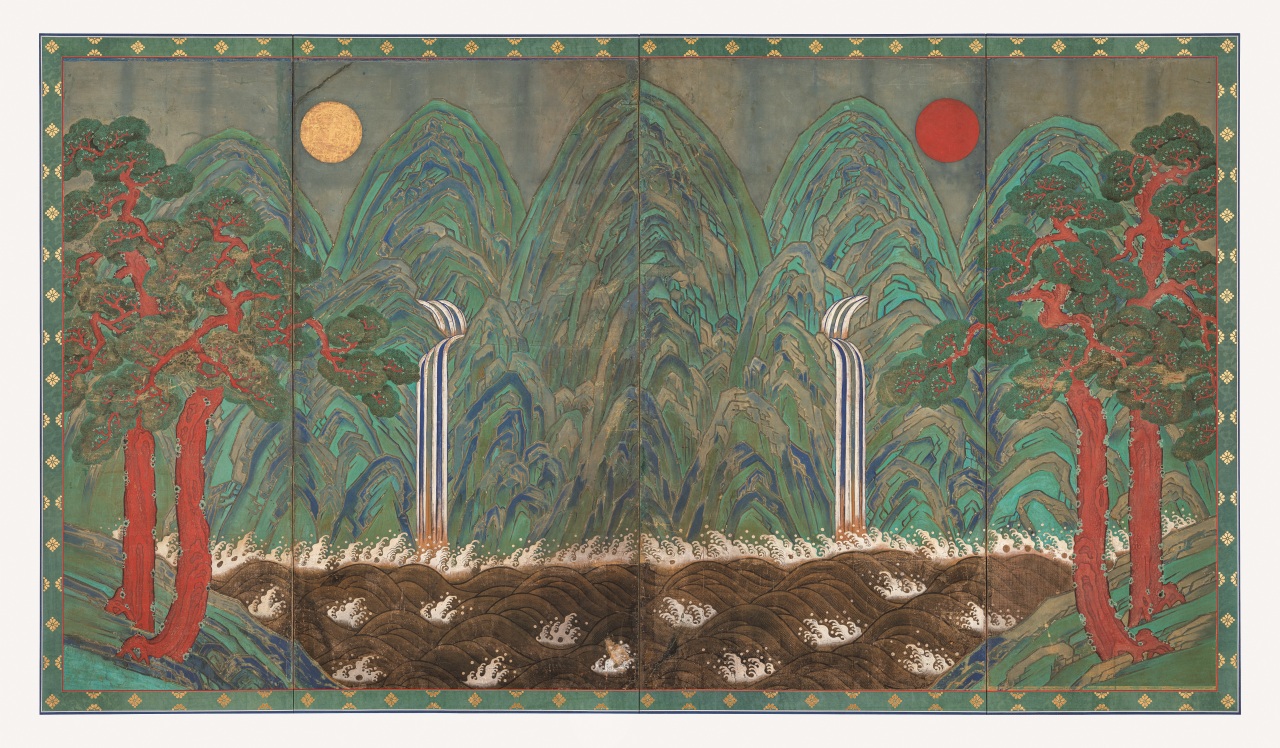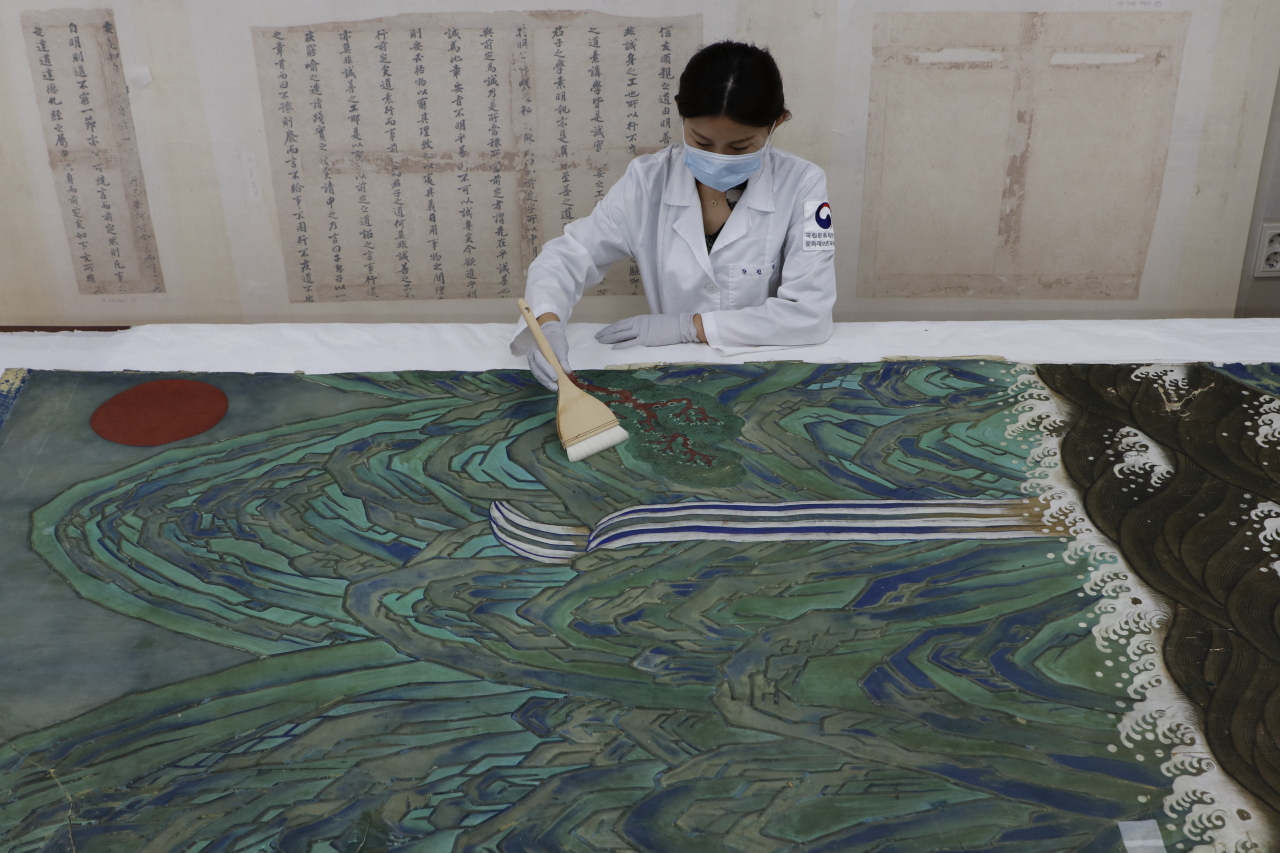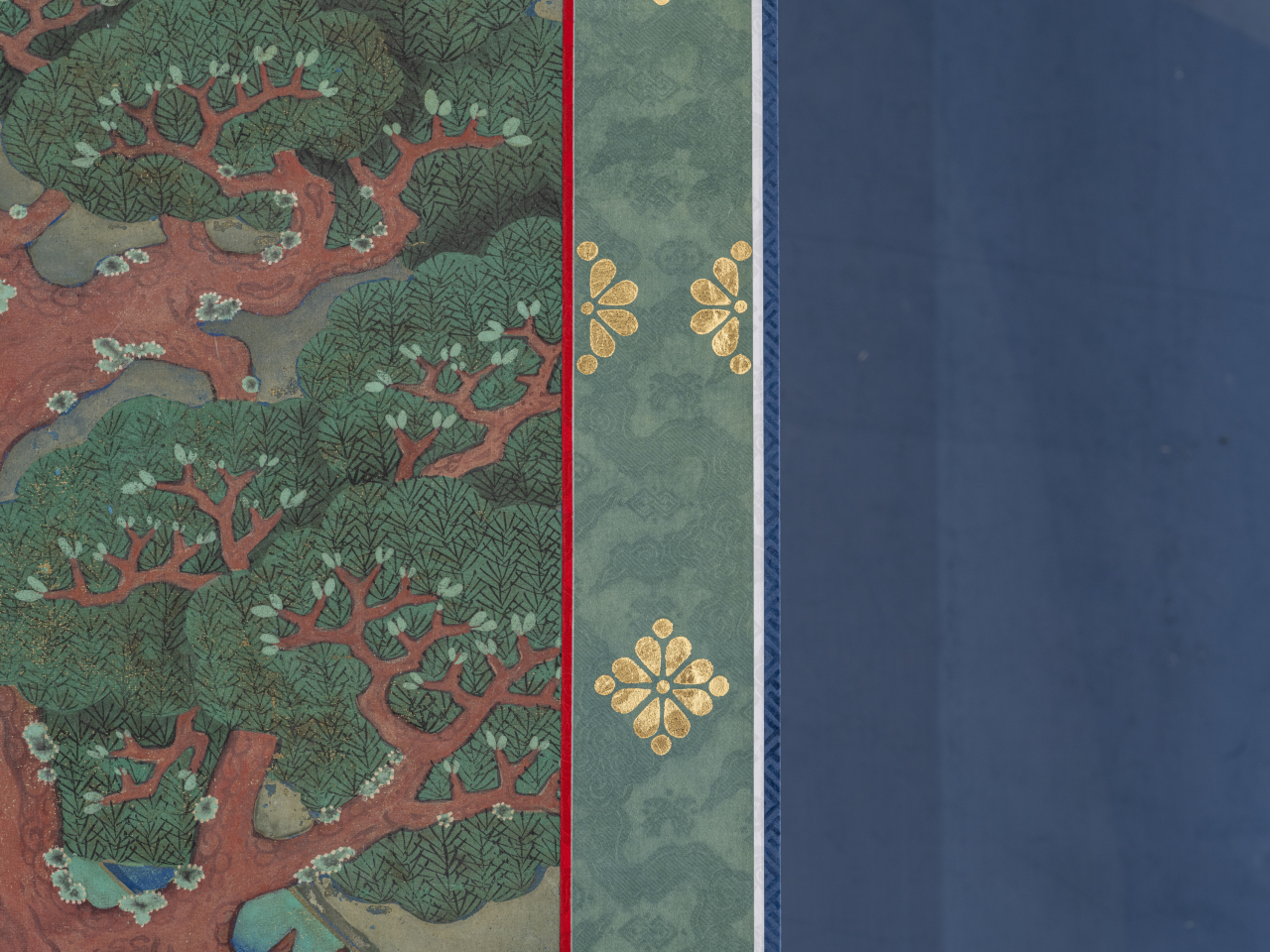‘Irworobongdo’ art behind king’s throne completes restoration
By Kim Hae-yeonPublished : Jan. 19, 2022 - 14:32

After six years of restoration beginning in 2016, “Irworobongdo,” a Korean folding screen with a landscape of a sun and a moon painted in the mid 19th century has been completed to return it to its original form, the Cultural Heritage Administration announced Wednesday.
“Irworobongdo,” meaning “Painting of the Sun, Moon and Five Peaks,” is a spectacular panel that was placed behind Eojwa, the king’s royal throne, to display the majesty of the Joseon royal court and the dignity of the king’s existence accordingly. Among many different versions of “Irworobongdo,” the recently restored one is from Injeongjeon, the main hall of the palace Changdeokgung, located in Jongno, central Seoul.
With the precipitous peaks staged at the center, pine trees dressed in unique colors are painted on the left and right. Two vibrantly flowing streams are also displayed in symmetrical order, filling the grandeur of the landscape.
“Irworobongdo,” meaning “Painting of the Sun, Moon and Five Peaks,” is a spectacular panel that was placed behind Eojwa, the king’s royal throne, to display the majesty of the Joseon royal court and the dignity of the king’s existence accordingly. Among many different versions of “Irworobongdo,” the recently restored one is from Injeongjeon, the main hall of the palace Changdeokgung, located in Jongno, central Seoul.
With the precipitous peaks staged at the center, pine trees dressed in unique colors are painted on the left and right. Two vibrantly flowing streams are also displayed in symmetrical order, filling the grandeur of the landscape.


The National Research Institute of Cultural Heritage analyzed each element in detail to identify the type of folding screen frame, the pigment used and the material of the wallpaper, and applied each to the preservation treatment. During the process, the existing folding screen frame was found to be impossible to reuse due to damage from insects and natural degradation. A new frame was produced based on an analysis of the tree species of the original.
“The restoration process took a considerable amount of time, since we had to pay special attention to Janghwang (traditional Korean mounting) silk. The gold leaf work around the edges also needed patience in the work,” Han Song-yi, the Cultural Heritage Administration’s team researcher, told The Korea Herald on Wednesday.
Relevant historical and art findings along with photos of the restoration process can be accessed through the website of the National Research Institute of Cultural Heritage. There are no plans to present the work in the palace for the public as of now.
By Kim Hae-yeon (hykim@heraldcorp.com)
“The restoration process took a considerable amount of time, since we had to pay special attention to Janghwang (traditional Korean mounting) silk. The gold leaf work around the edges also needed patience in the work,” Han Song-yi, the Cultural Heritage Administration’s team researcher, told The Korea Herald on Wednesday.
Relevant historical and art findings along with photos of the restoration process can be accessed through the website of the National Research Institute of Cultural Heritage. There are no plans to present the work in the palace for the public as of now.
By Kim Hae-yeon (hykim@heraldcorp.com)











![[Kim Seong-kon] Democracy and the future of South Korea](http://res.heraldm.com/phpwas/restmb_idxmake.php?idx=644&simg=/content/image/2024/04/16/20240416050802_0.jpg&u=)








![[Today’s K-pop] BTS pop-up event to come to Seoul](http://res.heraldm.com/phpwas/restmb_idxmake.php?idx=642&simg=/content/image/2024/04/17/20240417050734_0.jpg&u=)